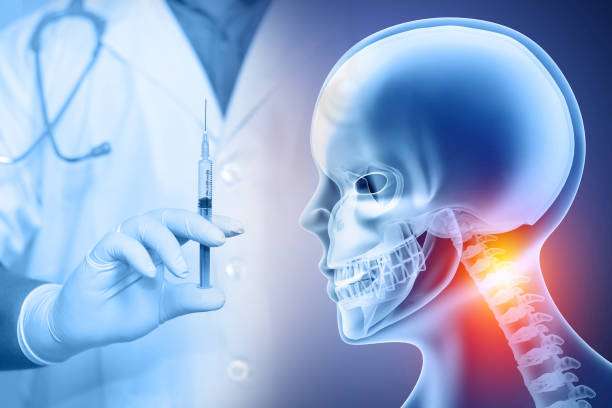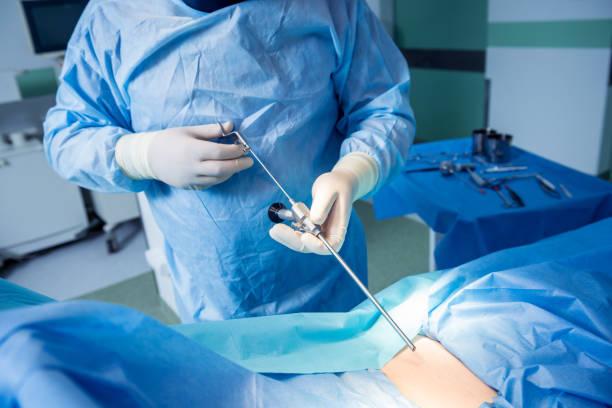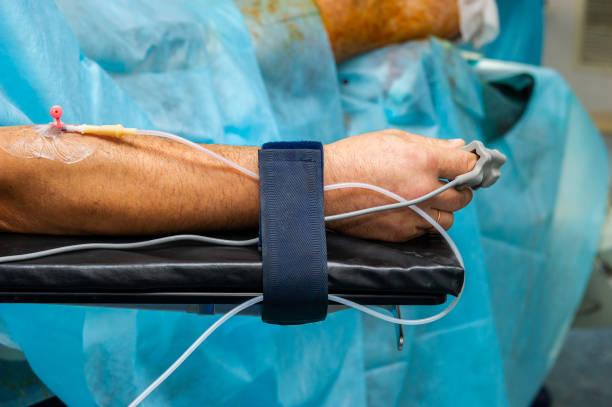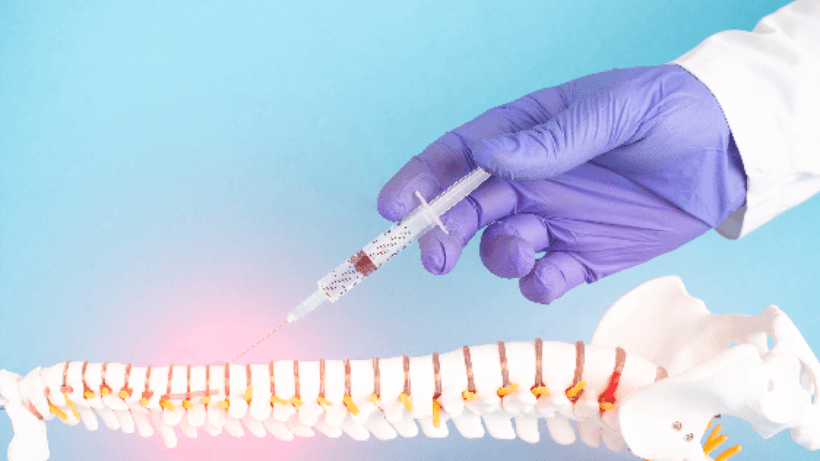
Exploring the Side Effects of Microdiscectomy Surgery: What You Need to Know
21 Apr, 2024
 Healthtrip Team
Healthtrip TeamUnderstanding microdiscectomy surgery effects and how you are supposed to handle them is crucial if you are considering undergoing this procedure. Microdiscectomy surgery, a common procedure aimed at alleviating the pain and discomfort associated with herniated disc material, has emerged as a significant intervention for those suffering from symptomatic lumbar disc herniation. By focusing on removing the source of pressure on the affected nerve root, microdiscectomy offers a pathway to pain relief and is recognized for its high success rate in reducing or completely eliminating sciatica pain.
The journey through microdiscectomy and its aftermath includes navigating through various side effects that might arise post-surgery. While the procedure boasts a high efficacy in treating back pain, potential microdiscectomy surgery effects such as pain and discomfort, nerve damage, and sensory changes, alongside inflammation and the risk of blood clots, are important considerations. As we delve into the specifics of microdiscectomy, the focus will also extend to managing these effects efficiently, thereby fostering a smoother recovery and ultimately enhancing your health and wellbeing.
Most popular procedures in India
Understanding Microdiscectomy Procedure
Microdiscectomy is a minimally invasive surgical procedure designed to address issues related to herniated discs, particularly when non-surgical treatments fail to provide relief after 6 to 12 weeks. This surgery is crucial for patients experiencing significant pain due to nerve root compression caused by disc herniation. Here’s a closer look at the procedure:
Wellness Treatments
Give yourself the time to relax
Lowest Prices Guaranteed!

Lowest Prices Guaranteed!
Procedure Overview:
Incision and Access: Surgeons make a small incision in the lower back to access the spine.
Techniques: Utilizing a microscope or surgical glasses, the surgeon employs one of three techniques—midline, tubular, or endoscopic microdiscectomy—to reach and repair the herniated disc.
Surgical Actions:
Disc and Nerve Treatment: The herniated disc portion pressing on the nerve root is carefully removed. If necessary, any bone spurs or ligaments adding pressure are also extracted.
Nerve Handling: The nerve root is delicately moved aside during the procedure to safely remove the disc material.
Exclusions for Surgery:
Medical Conditions: Microdiscectomy is not performed if conditions like cauda equina syndrome, spinal tumors, or infections are present.
Spinal Stability: It’s also unsuitable for patients with severe degeneration causing segmental instability or those with issues at multiple spinal levels.
By focusing on the affected areas and preserving the healthy parts of the disc, microdiscectomy aims to alleviate pain and restore function effectively. This targeted approach helps in significantly reducing symptoms and improving the patient’s quality of life.
Microdiscectomy effects – What to Expect Post-Surgery
After undergoing microdiscectomy surgery, you may encounter a range of common side effects and complications, which vary in frequency and severity. Here’s what you need to be aware of:
Pain Management and Medication Use:
Initial Pain: In the first two weeks post-surgery, pain can be intense, necessitating the use of strong painkillers like opioids, in combination with NSAIDs.
Medication Weaning: Typically, patients are gradually weaned off opioids within 1 to 2 weeks, transitioning to NSAIDs, acetaminophen, or other pain management medications as opioids are discontinued.
Therapeutic Techniques:
Heat Therapy: This may be recommended to relax tissues, reduce muscle spasms, and improve blood flow, which aids in tissue healing.
Ice Therapy: Applying ice to the lower back can help decrease inflammation and alleviate pain.
Potential Complications:
Dural Tear and Nerve Damage: Occurring in about 4% of surgeries, a dural tear can increase the risk of complications like meningitis if not properly addressed. Nerve injury, while rare (1% to 2% of cases), can lead to temporary or permanent issues such as weakness or numbness.
Infection and Blood Clots: Infections are generally prevented with antibiotics and proper surgical site care, but symptoms like pain, fever, and redness need immediate attention. Blood clots are another serious risk, mitigated by blood thinners and early mobilization.
Re-herniation and Revision Surgery: There’s a possibility of disc re-herniation, necessitating further interventions like repeat microdiscectomy or lumbar fusion, occurring in 7% to 10% of cases.
Understanding these potential side effects and complications can help you prepare and manage your recovery process more effectively.
Risks and Complications
When a microdiscectomy is great for getting rid of debilitating pain, the procedure comes with its unique sets of challenges. Therefore, it’s always advisable to explore microdisectomy surgery effects before you take the plunge.
1. Immediate Post-Surgical Risks:
Excessive Bleeding: Patients on blood thinners may experience significant bleeding during or after microdiscectomy, potentially leading to hematoma formation.
Infection Risks: While rare, infections post-surgery require immediate attention, possibly necessitating antibiotics or surgical drainage.
Dural Tear: Occurs in about 4% of cases, potentially leading to meningitis if not properly managed. Symptoms may include headaches and clear fluid leakage from the incision site.
2. Long-Term Surgical Outcomes:
Re-herniation: Affects 3.5% to 7.5% of patients, depending on the technique used, leading to symptoms like leg pain or numbness.
Nerve Damage: Can result in difficulties such as walking impairment, balance issues, or loss of bowel and bladder control.
Chronic Pain and Disability: Some patients may continue to experience pain or numbness, and in rare cases, surgery might fail, requiring further intervention.
3. Factors Influencing Recovery and Success:
Patient-Related Factors: Age, obesity, and lifestyle choices like smoking can adversely affect recovery. Occupations involving heavy labor also increase risk.
Spinal Conditions: Characteristics such as taller disc height and degenerative changes in facet joints heighten complication risks.
Activity Levels Post-Surgery: Overexertion can hinder recovery, while prolonged inactivity may increase the risk of complications like deep vein thrombosis.
Managing Side Effects and Recovery
Managing the side effects and promoting recovery after microdiscectomy surgery involves a structured approach to ensure a smooth transition back to daily activities. Here are practical steps to follow:
Immediate Post-Operative Care:
Medication and Comfort: Most patients manage well with non-opioid pain relievers and muscle relaxants to alleviate discomfort.
Home Recovery: Typically, you can return home a few hours post-surgery, emphasizing the need for a prepared and comfortable recovery space.
Activity Modification and Physical Therapy:
Initial Weeks: Limit bending, lifting, or twisting for the first 2 weeks, with some studies suggesting this may be sufficient before gradually resuming more activity.
Rehabilitation: Engage in a physical therapy program starting between the second and third week to restore mobility and strengthen back muscles.
Gradual Resumption of Activities:
Light Activities: Resume driving and light tasks after about 2 weeks.
Regular Routine: Return to work, school, and other hobbies within 6 weeks, ensuring not to overstrain.
Strenuous Activities: Wait at least 12 weeks before attempting heavy labor or contact sports.
Wound Care and Lifestyle Adjustments:
Incision Care: Keep the surgical site clean and dry, changing bandages daily, especially if the area is weeping or irritated by clothing.
Movement and Posture: Change your position frequently — about every 30 minutes — to avoid stiffness and enhance circulation, avoiding heavy lifting and strenuous activities.
Thermal Therapy: Apply a warm water bottle, a low-set heating pad, or a warm cloth to the back to ease muscle stiffness and soreness.
Innovative Treatments:
Barricaid Device: For patients at risk of reherniation, especially those with a larger annular defect, the Barricaid bone-anchored device has shown promising results, significantly reducing the need for reoperation.
These guidelines are designed to mitigate the common side effects of microdiscectomy surgery and aid in a faster, more effective recovery, ultimately enhancing your health and wellbeing.
Success Rates and Patient Outcomes
Microdiscectomy surgery, renowned for its minimally invasive approach, consistently demonstrates high success rates in alleviating sciatica pain and other symptoms associated with lumbar disc herniation. The effectiveness of this procedure is well-documented across various studies, reflecting a significant improvement in patient outcomes:
Overall Success Rates: Research involving over 39,000 patients undergoing lumbar disc herniation surgery revealed that approximately 78.9% to 84.3% reported good to excellent results, underscoring the reliability of microdiscectomy. Specifically, traditional methods like laminectomy combined with discectomy showed a success rate of 78.3%, while endoscopic techniques reported success in 79.5% of cases.
Procedure Comparisons:
Classical Surgery (Laminectomy/Discectomy): 34,547 patients, 78.3% satisfaction
Microdiscectomy: 3,400 patients, 84.3% satisfaction
Endoscopic Microdiscectomy: 1,101 patients, 79.5% satisfaction
Influencing Factors for Successful Outcomes:
Surgeon Expertise and Patient Communication: The skill of the surgeon and effective communication are pivotal in achieving optimal results.
Patient-Specific Factors: Age, lifestyle choices such as smoking, and physical condition significantly impact recovery and success.
Spinal Characteristics: Features like the height of the disc and degenerative changes can affect the outcome.
This data highlights the efficacy of microdiscectomy in providing relief and restoring function, making it a preferred choice for many patients suffering from disc-related issues.
Conclusion
Reflecting on the in-depth exploration of microdiscectomy and its side effects, it becomes evident that the procedure, while highly effective in alleviating pain from herniated discs, carries with it potential challenges that patients and healthcare providers must navigate. The detailed analysis of post-surgery side effects, ranging from pain and discomfort to more severe complications such as nerve damage and risk of re-herniation, underscores the importance of informed decision-making. Managing these side effects through careful planning, medication, and physical therapy plays a critical role in ensuring a successful recovery and optimizing patient outcomes.
Moreover, the broader implications of microdiscectomy surgery effects on health and wellbeing cannot be overstated. Understanding the balance between the high success rates and the potential for adverse effects is crucial for patients considering this procedure. As advancements in surgical techniques continue to evolve, so too does the potential for improved patient experiences and outcomes. Encouraging further research into minimizing complications and enhancing recovery will undoubtedly contribute to the procedure's efficacy and the wellbeing of those undergoing microdiscectomy. As with any medical intervention, the dialogue between patients and healthcare professionals remains key to navigating the decision-making process and recovery journey.
Consider using a medical tourism platform like HealthTrip.com for access to accredited healthcare providers worldwide, streamlined process, and assistance with travel logistics. With easy comparison of microdiscectomy treatment costs, direct communication with providers, and support for visa arrangements and accommodation, such platforms will simplify your medical journey considerably.
Related Blogs

Navigating Microdiscectomy Recovery: Understanding the Risks and Challenges
Embarking on microdiscectomy recovery can be a journey filled with

Understanding Microdiscectomy Risks: What You Need to Know
Considering microdiscectomy surgery to alleviate back pain? It's essential to

Exploring Microdiscectomy Surgery Costs in Thailand: What You Need to Know
While exploring the microdiscectomy surgery cost in Thailand, you'll find

When Should You Opt for Microdiscectomy Surgery?
Overview If you’re suffering from severe long-term leg pain, and even










